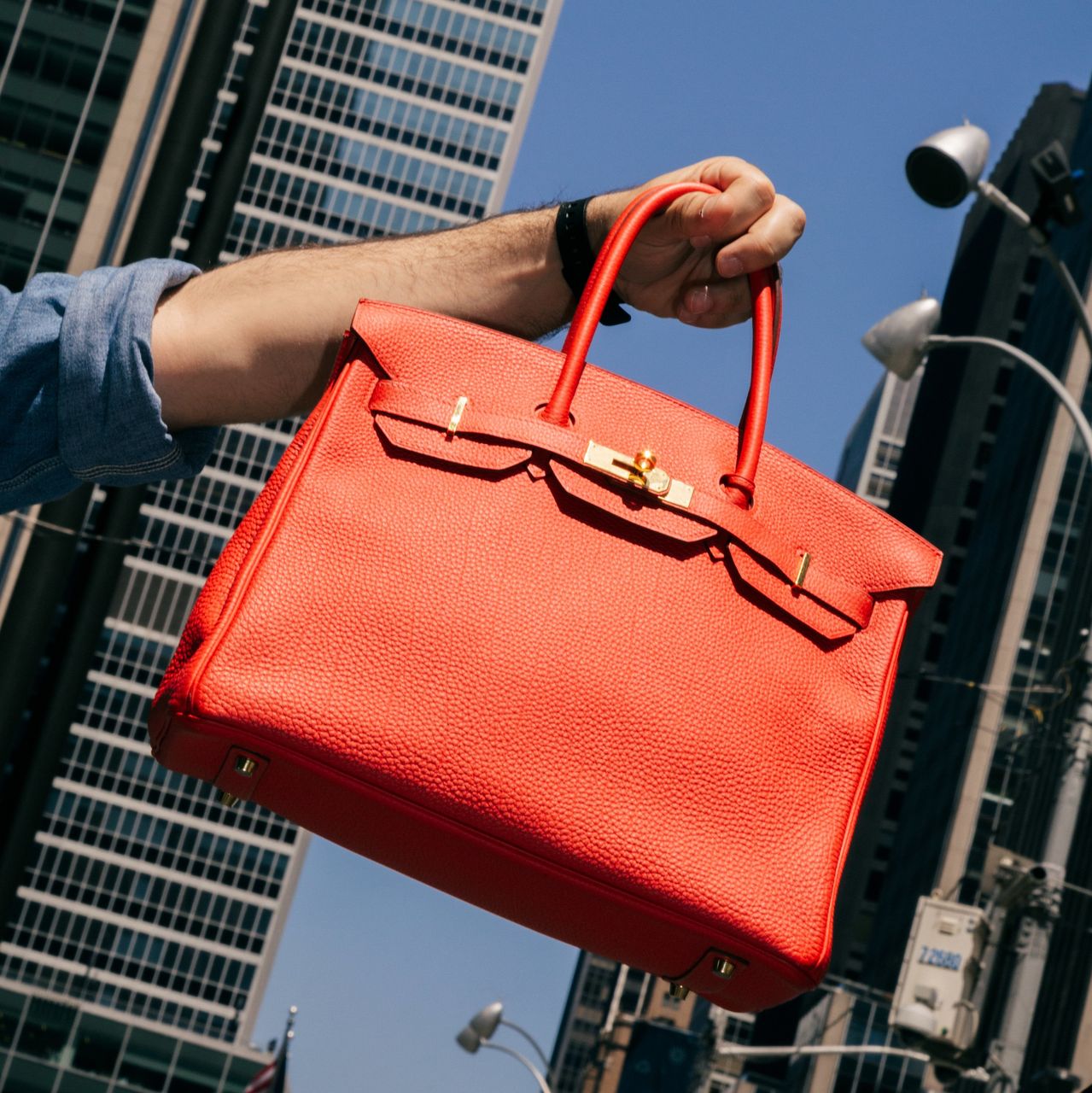Are Ties Really Dead?
While it’s increasingly rare to spot a tie in the workplace, this once-essential accessory could be making a comeback in less-expected settings.
IN 2019, Christian Conner was pondering buying a membership to Soho House, a social club in Manhattan’s Meatpacking District. The then-28-year-old media consultant showed up for a tour of this playground for the hipster elite in his classic “preppy with a twist” uniform—sport coat, trousers and one of his prized Gucci ties. All was going swimmingly, he recalled, until his guide turned to him and said, “Hey, you should take off your tie. We want to create a more casual atmosphere and discourage people from wearing ties.” Mr. Conner was gobsmacked. “I thought, this is crazy. This tie is cool as hell, so why would you tell me not to wear it?” (When asked for comment, a Soho House representative sent a link to the House Rules page of its website which requests that members and guests “keep it casual.”)
Interest in ties has been waning for some time, but the last two years of schlubby-comfy pandemic dressing have particularly dimmed their future. Business formal has taken on a near-death mien, and for many months, our collective dance card of tie-required events like weddings, bar mitzvahs and blowout birthday fetes was effectively erased. Even as we’ve approached a new normal, fewer and fewer back-to-the-office and party dress codes call for a smartly knotted tie. Can this once-essential accessory be saved?
Certain men feel strongly that it should, yet even some professionals who once wore ties daily now hesitate to sport them to work for fear of being teased. Investor George Birman, 33, of Shelter Island, N.Y., spent years building out his tie repertoire for business dinners, client meetings and the like. His prized collection now sits “neatly folded in its drawer,” lonely and dusty, he said. “And if I show up to the office with a tie these days, someone will make a joke and ask, ‘How was your interview?’”
Even so, the tie market isn’t quite catatonic. According to Macy’s men’s general business manager Sam Archibald, ties are having “healthier…momentum than what we expected” in 2022 so far. The days of widespread office-mandated ties may well be over, but “occasion-based” ties are moving. “You see less of what you would see as a ‘banker’s tie’ and much more business in what I would call ‘casual neckwear,’ said Mr. Archibald. “Brights and prints are definitely working. Floral neckwear is working for us.”
Smaller retailers also have noticed the shift to party-time ties. Larry Mahoney, longtime manager of the Andover Shop, a menswear store in Cambridge, Mass., remembers when ties were a “prominent part of any well-dressed man’s wardrobe,” and you wouldn’t dare head to the office, dinner or a professional engagement without one around your neck. “I would say that maybe 10 years ago, the tie started to begin its decline, although it did hold its ground for a while.” Today, the shop’s tie business, he said, is driven more by men heading to events than businessmen.
The tie can also still be found on the fringes of culture, in communities that historically haven’t worn ties. Leon Elias Wu, founder of Los Angeles gender-inclusive custom suiting brand SharpeHaus, sees the tie as less of a sober, wear-to-work proposition these days and more of a novelty fashion statement, especially when its traditional maleness—and its traditional function as a tool to help one fit in—is undercut. “Just throwing on a tie because it’s an occasion doesn’t work for everybody,” he said. “But look at what Avril Lavigne did with the tie 20 years ago—it can totally be used to make a statement,” whether you’re a formal guy, a female rocker or just a person trying to stand out.
Three Guys on the Ties They’ll Never Ditch
Ties aren’t just formal fashion accessories—they can hold sentimental value. Here, notable neckwear devotees shed light on the ties they’ll forever hold dear.
Ken Fulk
Interior Designer
“I’m a creature of my upbringing—of my preppy years growing up in Virginia when I had every color Izod shirt, every color Polo shirt, wore them religiously and washed all of them until they were pastels. I remember this beautiful ritual of my father standing behind me and showing me how to tie different tie knots—and I still have this blue and yellow repp stripe tie from Eljo’s in Charlottesville.”
Michael Strahan
Television Personality and former New York Giants Defensive End
“Most of my ties remind me of special moments. When I went up to space [with Jeff Bezos on Blue Origin in 2021] I got some space ties with spaceships and stars and rockets…That’s the great thing about a tie. It can have its own individual story. It’s something you can share or keep close to yourself…But the one tie I’ll never part with is a black tie. A straight-up black tie.”
Simon Kim
Restaurateur
“I have about 75 ties, and 90% of them are Hermès. But I have this one Hermès tie that my sister gave me. She is an art dealer with very meticulous taste. It has a red background with little blue-and-white turtles. She gave it to me when I was straight out of college and whenever I wore that tie to an interview, I had a 100% success rate in landing the job.”
Reprinted by permission of The Wall Street Journal, Copyright 2021 Dow Jones & Company. Inc. All Rights Reserved Worldwide. Original date of publication: May 10, 2022.
 Copyright 2020, Dow Jones & Company, Inc. All Rights Reserved Worldwide. LEARN MORE
Copyright 2020, Dow Jones & Company, Inc. All Rights Reserved Worldwide. LEARN MORE
This stylish family home combines a classic palette and finishes with a flexible floorplan
Just 55 minutes from Sydney, make this your creative getaway located in the majestic Hawkesbury region.
As Paris makes its final preparations for the Olympic games, its residents are busy with their own—packing their suitcases, confirming their reservations, and getting out of town.
Worried about the hordes of crowds and overall chaos the Olympics could bring, Parisians are fleeing the city in droves and inundating resort cities around the country. Hotels and holiday rentals in some of France’s most popular vacation destinations—from the French Riviera in the south to the beaches of Normandy in the north—say they are expecting massive crowds this year in advance of the Olympics. The games will run from July 26-Aug. 1.
“It’s already a major holiday season for us, and beyond that, we have the Olympics,” says Stéphane Personeni, general manager of the Lily of the Valley hotel in Saint Tropez. “People began booking early this year.”
Personeni’s hotel typically has no issues filling its rooms each summer—by May of each year, the luxury hotel typically finds itself completely booked out for the months of July and August. But this year, the 53-room hotel began filling up for summer reservations in February.
“We told our regular guests that everything—hotels, apartments, villas—are going to be hard to find this summer,” Personeni says. His neighbours around Saint Tropez say they’re similarly booked up.
As of March, the online marketplace Gens de Confiance (“Trusted People”), saw a 50% increase in reservations from Parisians seeking vacation rentals outside the capital during the Olympics.
Already, August is a popular vacation time for the French. With a minimum of five weeks of vacation mandated by law, many decide to take the entire month off, renting out villas in beachside destinations for longer periods.
But beyond the typical August travel, the Olympics are having a real impact, says Bertille Marchal, a spokesperson for Gens de Confiance.
“We’ve seen nearly three times more reservations for the dates of the Olympics than the following two weeks,” Marchal says. “The increase is definitely linked to the Olympic Games.”

Getty Images
According to the site, the most sought-out vacation destinations are Morbihan and Loire-Atlantique, a seaside region in the northwest; le Var, a coastal area within the southeast of France along the Côte d’Azur; and the island of Corsica in the Mediterranean.
Meanwhile, the Olympics haven’t necessarily been a boon to foreign tourism in the country. Many tourists who might have otherwise come to France are avoiding it this year in favour of other European capitals. In Paris, demand for stays at high-end hotels has collapsed, with bookings down 50% in July compared to last year, according to UMIH Prestige, which represents hotels charging at least €800 ($865) a night for rooms.
Earlier this year, high-end restaurants and concierges said the Olympics might even be an opportunity to score a hard-get-seat at the city’s fine dining.
In the Occitanie region in southwest France, the overall number of reservations this summer hasn’t changed much from last year, says Vincent Gare, president of the regional tourism committee there.
“But looking further at the numbers, we do see an increase in the clientele coming from the Paris region,” Gare told Le Figaro, noting that the increase in reservations has fallen directly on the dates of the Olympic games.
Michel Barré, a retiree living in Paris’s Le Marais neighbourhood, is one of those opting for the beach rather than the opening ceremony. In January, he booked a stay in Normandy for two weeks.
“Even though it’s a major European capital, Paris is still a small city—it’s a massive effort to host all of these events,” Barré says. “The Olympics are going to be a mess.”
More than anything, he just wants some calm after an event-filled summer in Paris, which just before the Olympics experienced the drama of a snap election called by Macron.
“It’s been a hectic summer here,” he says.

AFP via Getty Images
Parisians—Barré included—feel that the city, by over-catering to its tourists, is driving out many residents.
Parts of the Seine—usually one of the most popular summertime hangout spots —have been closed off for weeks as the city installs bleachers and Olympics signage. In certain neighbourhoods, residents will need to scan a QR code with police to access their own apartments. And from the Olympics to Sept. 8, Paris is nearly doubling the price of transit tickets from €2.15 to €4 per ride.
The city’s clear willingness to capitalise on its tourists has motivated some residents to do the same. In March, the number of active Airbnb listings in Paris reached an all-time high as hosts rushed to list their apartments. Listings grew 40% from the same time last year, according to the company.
With their regular clients taking off, Parisian restaurants and merchants are complaining that business is down.
“Are there any Parisians left in Paris?” Alaine Fontaine, president of the restaurant industry association, told the radio station Franceinfo on Sunday. “For the last three weeks, there haven’t been any here.”
Still, for all the talk of those leaving, there are plenty who have decided to stick around.
Jay Swanson, an American expat and YouTuber, can’t imagine leaving during the Olympics—he secured his tickets to see ping pong and volleyball last year. He’s also less concerned about the crowds and road closures than others, having just put together a series of videos explaining how to navigate Paris during the games.
“It’s been 100 years since the Games came to Paris; when else will we get a chance to host the world like this?” Swanson says. “So many Parisians are leaving and tourism is down, so not only will it be quiet but the only people left will be here for a party.”
This stylish family home combines a classic palette and finishes with a flexible floorplan
Just 55 minutes from Sydney, make this your creative getaway located in the majestic Hawkesbury region.






















